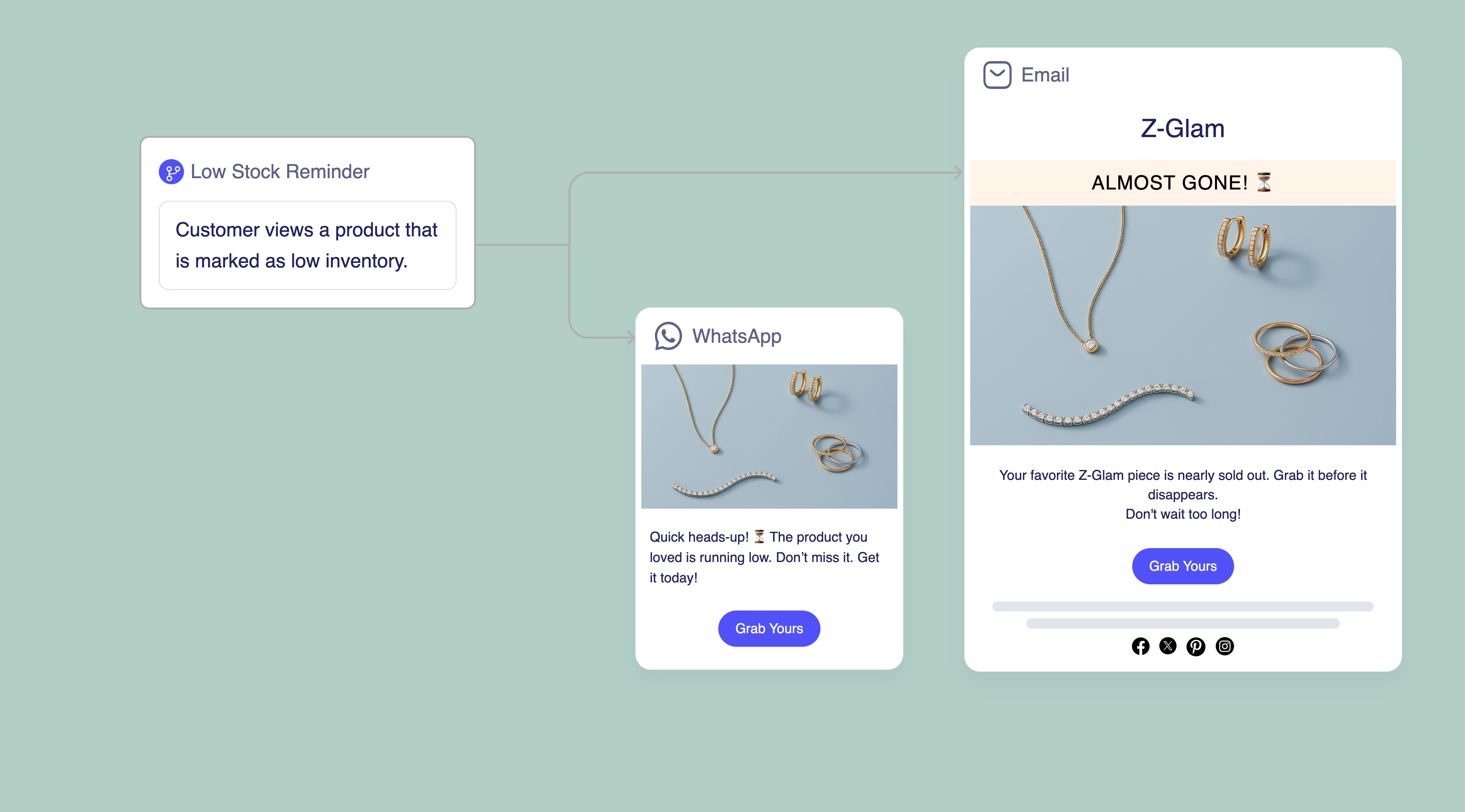
Low Stock Reminders
Recover revenue from browsers and cart abandoners by creating urgency when product inventory drops below threshold.

What are Low Stock Reminders?
Low Stock Reminders are campaigns designed to alert customers when a product they’ve shown interest in is about to sell out. These reminders target browsers or cart abandoners who engaged with a product but didn’t purchase. By introducing urgency and scarcity, brands can nudge hesitant shoppers to complete their purchase, reducing cart abandonment and maximizing conversions.
Why Low Stock Reminders Matter?

Challenges

Opportunities
Outcomes
Higher Conversion Rates
Reduced Cart Abandonment
Recovered Lost Revenue
Who is it for?
Audience
Exclusions
How it plays out
A sample sequence for this use case.
(Product stock drops) "Almost gone! Your favorite pick is almost sold out. Don't miss it → [Shop Now]"
"Quick heads-up! The [Product] you liked is running out fast. Grab it now → [Don't miss out]"
"Only a few left! This popular item won't last long → [Secure Yours]"
(Final units) "Last chance! Final pieces remaining for [Product] → [Buy Before It's Gone]"
Best Practices
- Trigger low stock alerts immediately when inventory drops below threshold to maximize urgency impact on interested customers.
- Use authentic scarcity messaging based on real inventory levels rather than false urgency to maintain customer trust.
- Personalize alerts for specific products customers viewed or carted to make the urgency feel relevant and actionable.
Low Stock Reminders Examples & Prompts
Channel Examples
Automate with Zenie Prompts
Tracking inventory levels and matching them to customer interest requires real-time monitoring and segmentation. With Zenie, you can automatically trigger low stock alerts for relevant customers without having to manage your inventory manually.
Explore Similar eCommerce Marketing Strategies
FAQs
Why are low stock reminders effective?
They leverage urgency and scarcity — two proven psychological triggers — to push hesitant shoppers toward conversion. When customers know stock is limited, they’re more likely to act quickly.
When should I send low stock reminders?
Send them immediately after stock drops below a set threshold. Quick alerts capture the shopper’s attention before they move on or forget.
Who should receive low stock reminders?
Best targets include browsers, cart abandoners, or wishlist users who previously showed intent but didn’t buy.
Can low stock reminders backfire?
They work best when authentic. Avoid overusing “almost gone” messaging on every product, or customers may lose trust. Only trigger alerts when stock levels genuinely warrant urgency.
How do low stock reminders increase revenue?
By converting high-intent shoppers who were close to purchasing, these campaigns reduce abandonment and recover revenue that would otherwise be lost. Over time, they also help optimize inventory turnover.


